Optimizing Deep Learning for Plant Disease Detection
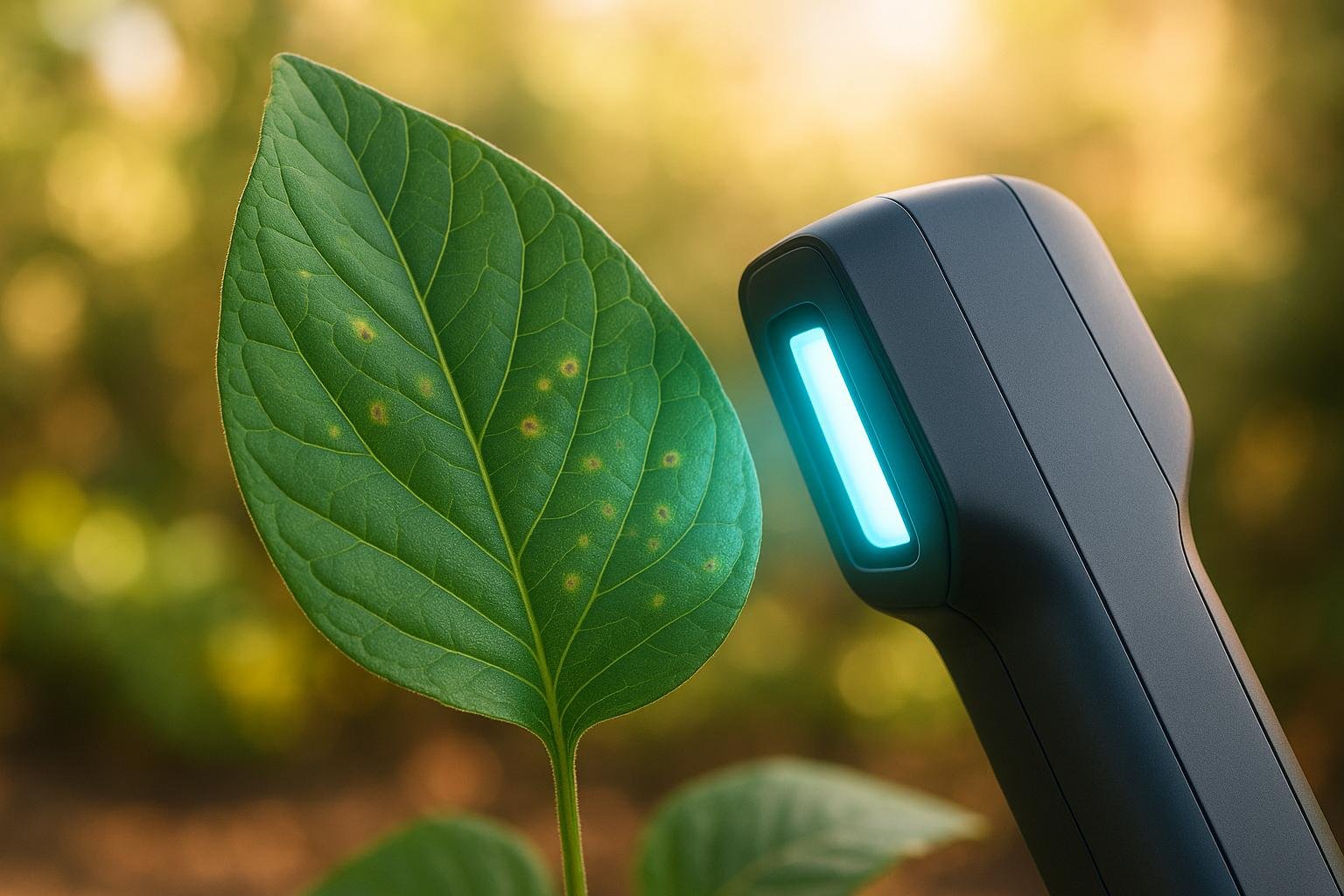
Plant diseases destroy over 35% of crops annually, impacting food supply and farmer income. Deep learning offers a faster, more accurate way to identify diseases compared to manual inspection. By using image recognition, these systems detect subtle symptoms early, allowing timely intervention before outbreaks worsen.
Key takeaways:
- Data Prep Matters: High-quality, diverse images (from drones, smartphones, sensors) are essential. Proper labeling and balancing datasets improve model training.
- Model Selection: ResNet, MobileNet, EfficientNet, and Vision Transformers are popular for plant disease detection. Each has strengths for specific use cases, like speed for mobile apps or accuracy for greenhouse monitoring.
- Optimization Techniques: Hyperparameter tuning, transfer learning, and regularization improve performance. Pruning and quantization make models efficient for edge devices.
- Deployment: Models can run on mobile apps or edge devices for offline use, and IoT sensors can enhance detection with real-time data.
Deep learning is transforming how crops are monitored, making disease detection faster and more precise.
Deep Learning Project: Plant Disease Detection | PyTorch | Creating Custom Dataset
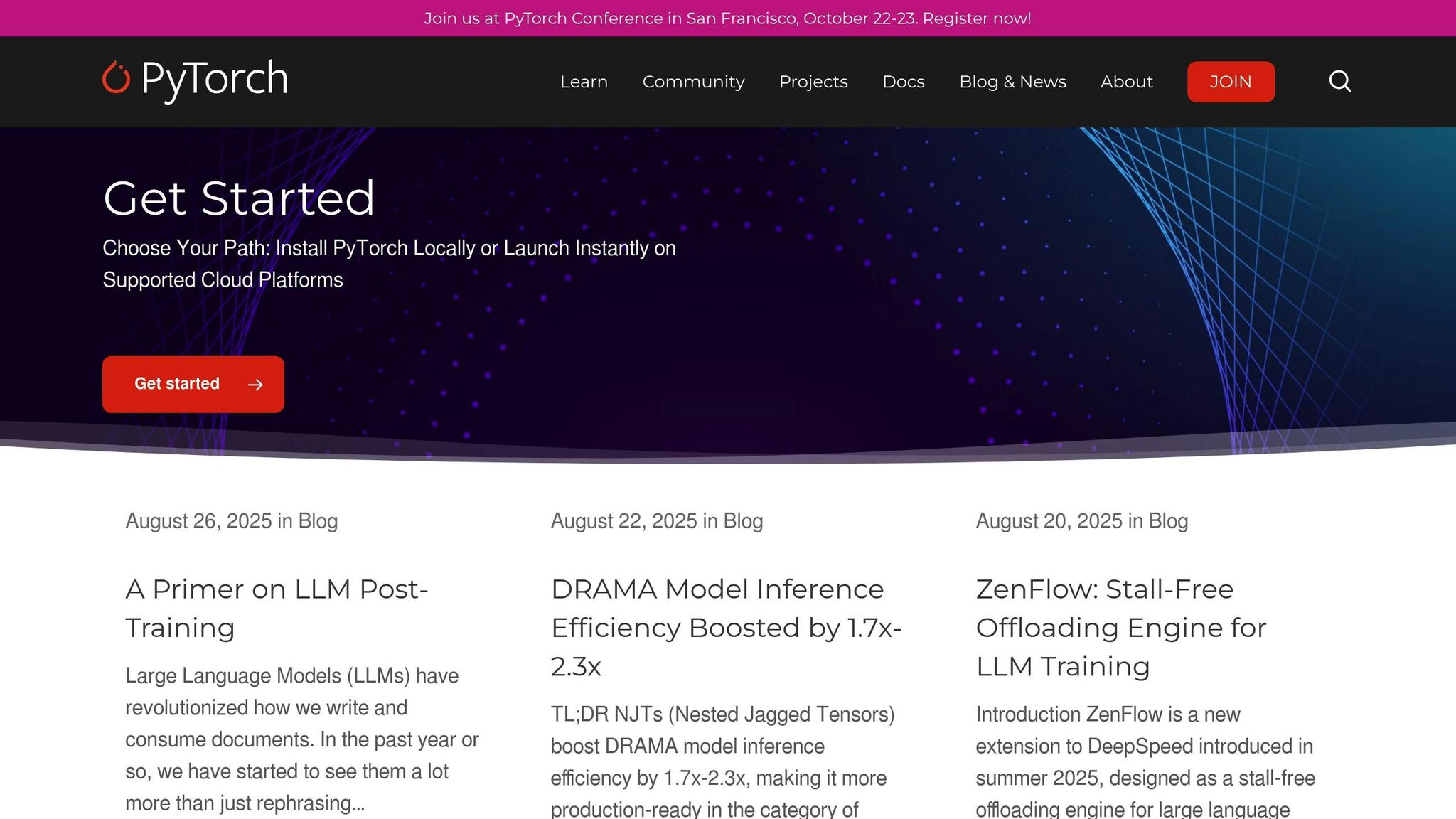

Preparing and Processing Data for Model Training
Tackling the imaging challenges and variability mentioned earlier begins with thorough data preparation. High-quality, diverse images that reflect both healthy and diseased states in real-world conditions are the backbone of deep learning in plant disease detection. This step sets the stage for customizing model architectures and achieving optimal performance.
Image Data Sources for Plant Disease Detection
When gathering image data, consider using a variety of tools and methods to capture different perspectives and scales:
- Modern smartphones can capture subtle disease symptoms when used with consistent lighting and at a proper distance.
- Drone-mounted cameras provide an aerial view, making it easier to identify disease patterns across entire fields.
- Fixed field sensors, which capture images at regular intervals throughout the growing season, create time-series data that show how disease symptoms evolve over time.
For major crops in the U.S., such as corn and soybeans, close-up images are essential to capture detailed symptoms. For crops like tomatoes, photographs from multiple angles help ensure comprehensive coverage.
Data Annotation and Labeling Best Practices
Transforming raw images into useful training data starts with precise labeling. Each image should be annotated to indicate the disease's presence, location, and type. This might include drawing bounding boxes around affected areas or using segmentation masks to outline diseased tissue.
To ensure annotations are consistent, create clear visual guidelines for each disease category. These guidelines help maintain uniformity in how symptoms are interpreted. It’s also a good idea to have plant pathologists review the annotations to catch errors or flag ambiguous cases.
Building a balanced dataset is equally important. Include not only common diseases in the target region but also rarer, economically impactful diseases when possible. This ensures the model is prepared to recognize a wide range of conditions.
Processing Techniques for Better Models
Processing the dataset is crucial for creating uniformity and helping the model focus on key disease patterns. A typical processing pipeline may include the following steps:
- Image Standardization: Resize all images to the same dimensions.
- Normalization: Adjust pixel values using predefined means and standard deviations (e.g., ImageNet values: means [0.485, 0.456, 0.406], standard deviations [0.229, 0.224, 0.225]).
- Data Augmentation: Apply transformations like rotations, flips, color adjustments, and random cropping to mimic diverse conditions.
- Advanced Augmentation: Carefully introduce elements like Gaussian noise, motion blur, or simulated shadows to make the model more robust, but avoid overdoing it to keep the data realistic.
Selecting and Customizing Deep Learning Architectures
When tackling plant disease detection, it's crucial to pick a deep learning architecture that strikes the right balance between accuracy and computational efficiency. Once selected, these architectures should be fine-tuned to address the specific needs of agricultural applications.
Popular Model Architectures for Plant Disease Detection
Convolutional Neural Networks (CNNs) are the backbone of most plant disease detection systems. Their strength lies in identifying intricate visual patterns within images. Take ResNet models, for instance - they're widely used in agriculture because their residual connections help retain critical visual details during training. However, ResNet models often require significant computational resources.
For real-time detection in the field, MobileNet models are a better fit. They’re designed to be lightweight and fast, making them ideal for mobile and edge devices.
EfficientNet models offer another option by scaling depth, width, and resolution simultaneously. Some EfficientNet variants can deliver performance similar to deeper networks while consuming fewer computational resources.
On the cutting edge, Vision Transformers (ViTs) take a different approach. They process images as patches, much like sequences in natural language processing. While ViTs can achieve impressive accuracy with large datasets, they demand substantial computational power.
Customizing Architectures for Agricultural Applications
Standard deep learning models often need adjustments to perform well in agricultural scenarios, especially for detecting plant diseases.
- Incorporate attention mechanisms: These can help the model focus on key disease indicators, such as leaf spots or discoloration, while ignoring irrelevant background elements.
- Use parallel convolution branches: By employing different kernel sizes, these branches can capture both early-stage and advanced disease features.
- Adjust output layers: Configure outputs to reflect diseases prevalent in U.S. crops, like corn or tomatoes, for more targeted detection.
To combat overfitting - especially when working with small agricultural datasets - apply regularization techniques like dropout and batch normalization. These methods also improve the model's resilience to variations in lighting conditions.
Transfer learning is another powerful tool. By fine-tuning pre-trained models, you can adapt them to detect specific plant diseases. Use different learning rates for various layers: keep the early layers stable to preserve general visual features, while refining the deeper layers to focus on disease-specific patterns.
For edge deployment, reduce the model’s computational demands without compromising accuracy. Techniques like depthwise separable convolutions, network pruning, and weight quantization can shrink model size and complexity. This makes it easier to run the model on mobile devices or farm equipment.
Ultimately, the choice of architectural modifications should align with your specific use case. For tasks like greenhouse monitoring, prioritize accuracy. For tools like handheld devices, speed and efficiency are key.
🚀 Ready to Reinvent Your Garden?
Join thousands of homeowners who have transformed their gardens using our AI design tool. Upload one photo to explore endless possibilities.
Get your AI garden designs →Techniques for Improving Deep Learning Model Performance
After you've chosen and customized your deep learning architecture, the next step is fine-tuning it to maximize its performance. By using systematic optimization techniques, you can significantly enhance accuracy and make your model suitable for practical agricultural applications. Once you’ve got the basics down, you can also look into methods like pruning and quantization to make your model more efficient for field use.
Hyperparameter Tuning for Better Performance
Hyperparameter tuning is all about setting the right parameters before training your model, and it plays a huge role in how reliable your results will be. Done correctly, it can turn an average model into one that delivers consistently accurate outcomes.
Some of the most important hyperparameters include the learning rate, batch size, and optimizer selection. The learning rate controls how fast your model learns. If it’s too high, the model might skip over the best solutions; if it’s too low, training can drag on forever. For tasks like detecting plant diseases, starting with learning rates between 0.001 and 0.01 is often a good idea before fine-tuning further.
Batch size is another critical factor. Research suggests that batch sizes ranging from 2 to 32 often produce better results, with 16, 32, and 64 being popular choices [2]. Smaller batch sizes are particularly effective at improving the model's ability to generalize.
Tuning hyperparameters is an iterative process that requires running multiple experiments with different combinations. It’s computationally demanding but essential. Cross-validation is often used to estimate how well the model will generalize and to guide the selection of optimal values [1][5].
Getting this wrong can lead to two major problems: underfitting - where the model performs poorly on both training and testing data - or overfitting, where the model memorizes the training data but struggles with new, unseen images [6]. Research on convolutional neural networks (CNNs) like Xception and DenseNet for plant disease detection has shown that careful hyperparameter tuning can improve accuracy by about 2-3% compared to default settings [3][4]. This step sets the stage for even more advanced optimizations like pruning and transfer learning.
sbb-itb-4d6a8dd
Evaluating and Deploying Deep Learning Models
Once you've fine-tuned and pruned your model, the next step is to evaluate its performance and ensure it's ready for real-world agricultural applications.
Key Metrics for Model Performance Evaluation
Relying solely on overall accuracy can be misleading, especially with datasets where some diseases are far more common than others. To get a clearer picture, focus on these metrics:
- Precision measures the percentage of correctly identified diseased plants, helping to minimize unnecessary treatments.
- Recall reflects the percentage of actual diseased plants detected by the model, which is critical for preventing outbreaks.
- F1 Score balances precision and recall, providing a single metric to evaluate overall effectiveness.
- ROC-AUC (Receiver Operating Characteristic - Area Under Curve) assesses the model's ability to distinguish between healthy and diseased plants across various thresholds. A value closer to 1.0 indicates stronger performance.
For multi-class problems - where multiple diseases are involved - these metrics should be calculated for each disease type. Pay special attention to diseases that pose a significant economic risk or spread rapidly. These insights can guide improvements and highlight areas where interpretability tools might be needed.
Making Models Interpretable with Explainable AI
Even the most accurate model can face skepticism if its decision-making process isn't clear. This is where Explainable AI (XAI) comes into play, offering insights into how the model arrives at its predictions.
For instance, Grad-CAM (Gradient-weighted Class Activation Mapping) generates heat maps to show which parts of a plant image influenced the model's decision. These visualizations allow farmers to compare the model's focus areas with visible symptoms, fostering trust and understanding.
Beyond building confidence, interpretability tools can also reveal when the model is focusing on irrelevant features. This feedback is invaluable for refining both the training data and the model's architecture, leading to better performance over time.
Deployment Strategies for Agricultural Applications
Once you've confirmed that your model performs well and is interpretable, it's time to deploy it in a way that meets the specific needs of the agricultural environment. Field conditions, including limited internet access and varying light levels, often dictate deployment strategies.
- Mobile Apps: For small-scale farmers, mobile apps are a practical solution. Optimizing the model for smartphones and enabling offline functionality allows for image analysis even without internet connectivity. Data can sync automatically when the device goes online.
- Edge Devices: Larger farms and research facilities can benefit from deploying models on edge devices. These devices enable continuous monitoring of crop health and can send alerts when issues arise.
When working in the U.S., make sure to display environmental data in familiar units, such as temperature in °F, rainfall in inches, and field areas in acres.
Additionally, IoT sensor networks can enhance disease detection by integrating data from soil moisture sensors, weather stations, and irrigation systems. To maintain smooth operation during critical planting and growing seasons, design your deployment to handle seasonal spikes in activity. Combining cloud-based processing with edge caching ensures reliable performance while offering access to historical data for deeper insights.
Conclusion and Key Takeaways
Detecting plant diseases through deep learning requires a thoughtful and well-rounded strategy. By refining basic models with advanced techniques, these systems can become practical and dependable tools for farmers and agricultural professionals.
Key Steps for Improving Deep Learning Models
The success of plant disease detection hinges on two critical factors: quality data and customized model architectures. High-quality, annotated datasets and robust preprocessing techniques are vital for creating reliable models. Diverse datasets ensure the model performs well across various conditions and scenarios. Additionally, selecting architectures tailored to agricultural challenges is crucial for accuracy and efficiency.
Fine-tuning hyperparameters and employing model pruning are also essential to ensure quick and reliable performance in the field. Even the most advanced models lose their value if they take too long to process images - farmers need fast results to make timely decisions during critical growing periods.
Thorough evaluation processes further reinforce the model's reliability. Tools like Grad-CAM, which explain AI decisions by highlighting plant features that influenced the diagnosis, can help build trust and confidence in these systems.
These strategies lay a strong foundation for ongoing progress in plant disease detection.
Future Directions in Plant Disease Detection
The future of plant disease detection looks promising, with several exciting advancements on the horizon. For instance, combining leaf imagery with real-time data like soil moisture, temperature (°F), and humidity could help predict disease outbreaks before symptoms appear, enabling proactive management.
Federated learning presents another opportunity. This approach allows models to improve using data from multiple farms without centralizing sensitive information. By protecting individual farm data, federated learning supports privacy while enhancing model performance.
Meanwhile, advancements in edge computing are making it possible to run complex models directly on farm equipment. Imagine tractors and drones equipped with AI chips that can detect diseases in real time during routine operations. These systems could even adjust treatments automatically based on detected conditions, saving time and resources.
Satellite imagery also holds potential for complementing ground-level detection. While analyzing individual plants is critical, satellite data can reveal larger patterns across fields. This broader perspective helps farmers prioritize areas that need immediate attention during busy growing seasons.
These innovations signal a shift from reactive disease management to a more predictive approach, reshaping how farmers manage crop health across the diverse agricultural landscapes of the United States.
FAQs
How does deep learning enhance the accuracy and speed of detecting plant diseases compared to traditional methods?
Deep learning has revolutionized plant disease detection by delivering more accurate and faster results compared to older methods. With advanced models achieving accuracy rates exceeding 97%, it leaves traditional techniques far behind. What makes this possible is deep learning’s ability to automatically recognize intricate patterns in plant images - completely removing the need for manual feature extraction.
Another game-changer is its capacity for real-time disease detection, enabling swift action to minimize crop damage. Traditional image processing methods often require significant manual effort and can yield inconsistent results. In contrast, deep learning offers a scalable and reliable approach, perfectly suited to meet the demands of modern agriculture.
What factors should I consider when choosing a deep learning model for agricultural applications like mobile apps or greenhouse systems?
When choosing a deep learning model for agricultural tasks, you need to think about the available computational resources and the specific demands of your project. For mobile applications, lightweight models like optimized CNNs or YOLOv8 are excellent options. They’re designed to use less processing power, making them perfect for real-time tasks on devices with limited hardware capabilities.
In contrast, greenhouse systems can handle more resource-intensive models like deep CNNs or dual-task detection models. These environments often come equipped with high-performance hardware, enabling more accurate results for tasks such as monitoring plant health or spotting diseases. The key is finding the right balance between accuracy, speed, and hardware limitations to ensure the model fits your application’s needs.
How does Explainable AI (XAI) improve trust and usability of deep learning models in agriculture?
🎨 Visualize Your Dream Garden Today!
Transform any outdoor space into a professional landscape design in minutes. Just upload a photo, choose your style, and let our AI do the rest.
Start your garden transformation now →Explainable AI (XAI) in Agriculture
Explainable AI (XAI) takes the mystery out of deep learning models by making them more transparent and easier to grasp. For farmers and agricultural professionals, this means understanding how AI arrives at its decisions, addressing the often-criticized "black box" nature of complex systems. This clarity boosts confidence in AI-driven solutions for critical tasks like crop management, disease detection, and pest control.
When AI's reasoning is clear, more people are likely to adopt these tools in agriculture. XAI not only simplifies compliance with regulations but also promotes teamwork by offering insights that decision-makers can trust. The result? AI tools that are not just accurate but also practical and dependable for real-world farming challenges.
Related posts
Related Articles
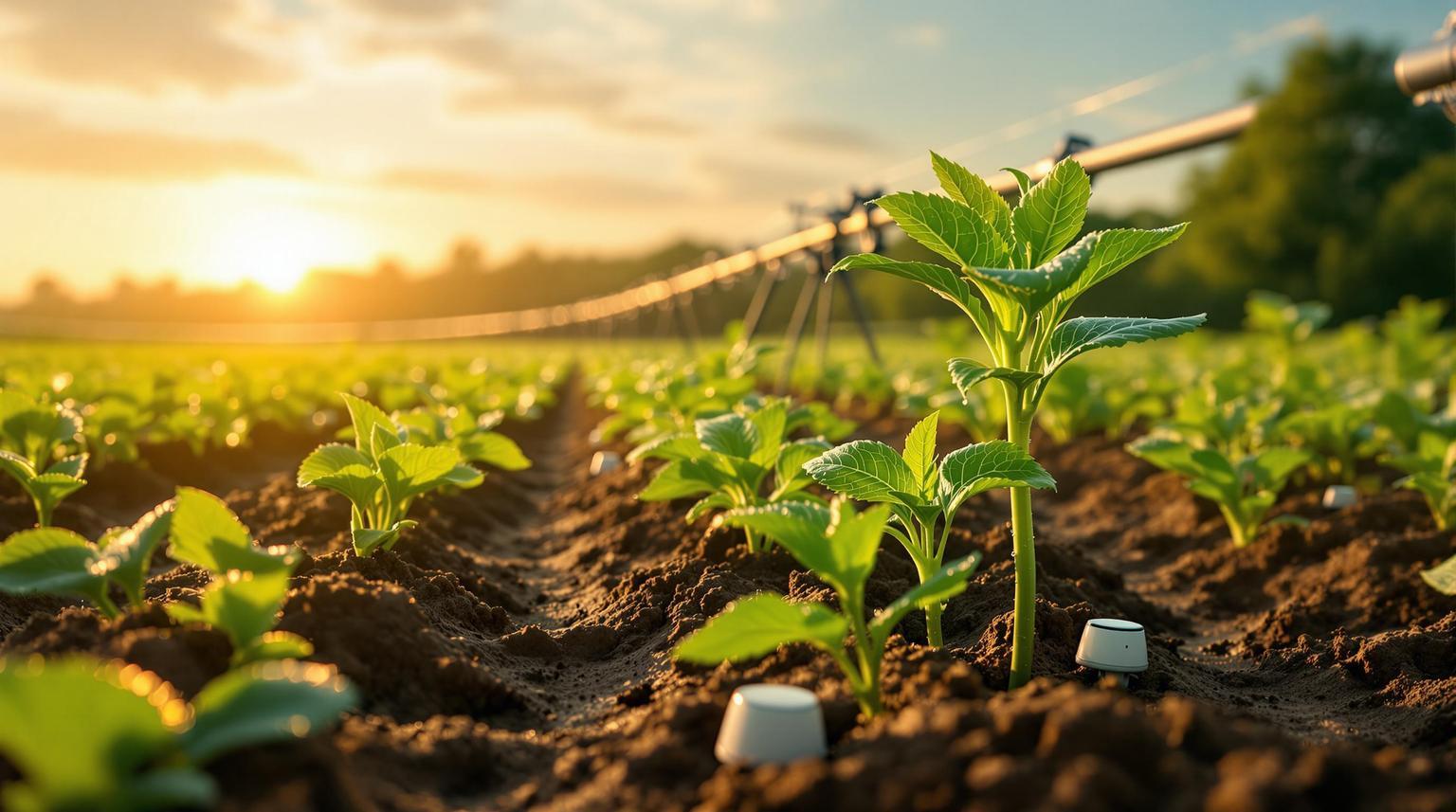
How AI Improves Soil Moisture Data Analysis
Explore how AI enhances soil moisture analysis, optimizes irrigation, and promotes healthier plants while conserving water in agriculture.
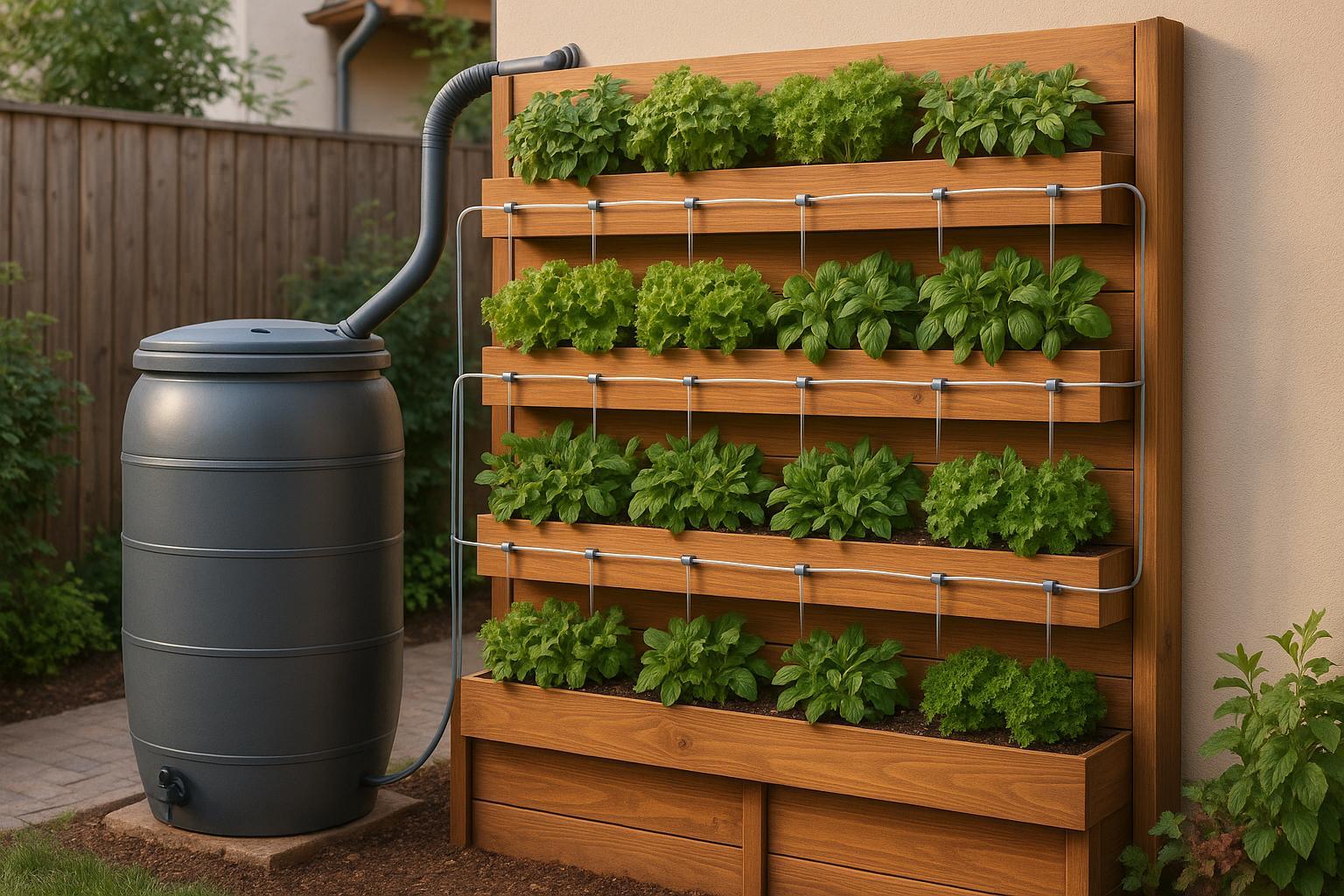
DIY Rainwater Systems for Vertical Gardens
Learn to create a DIY rainwater system for your vertical garden to save water and promote healthier plant growth with low-cost solutions.
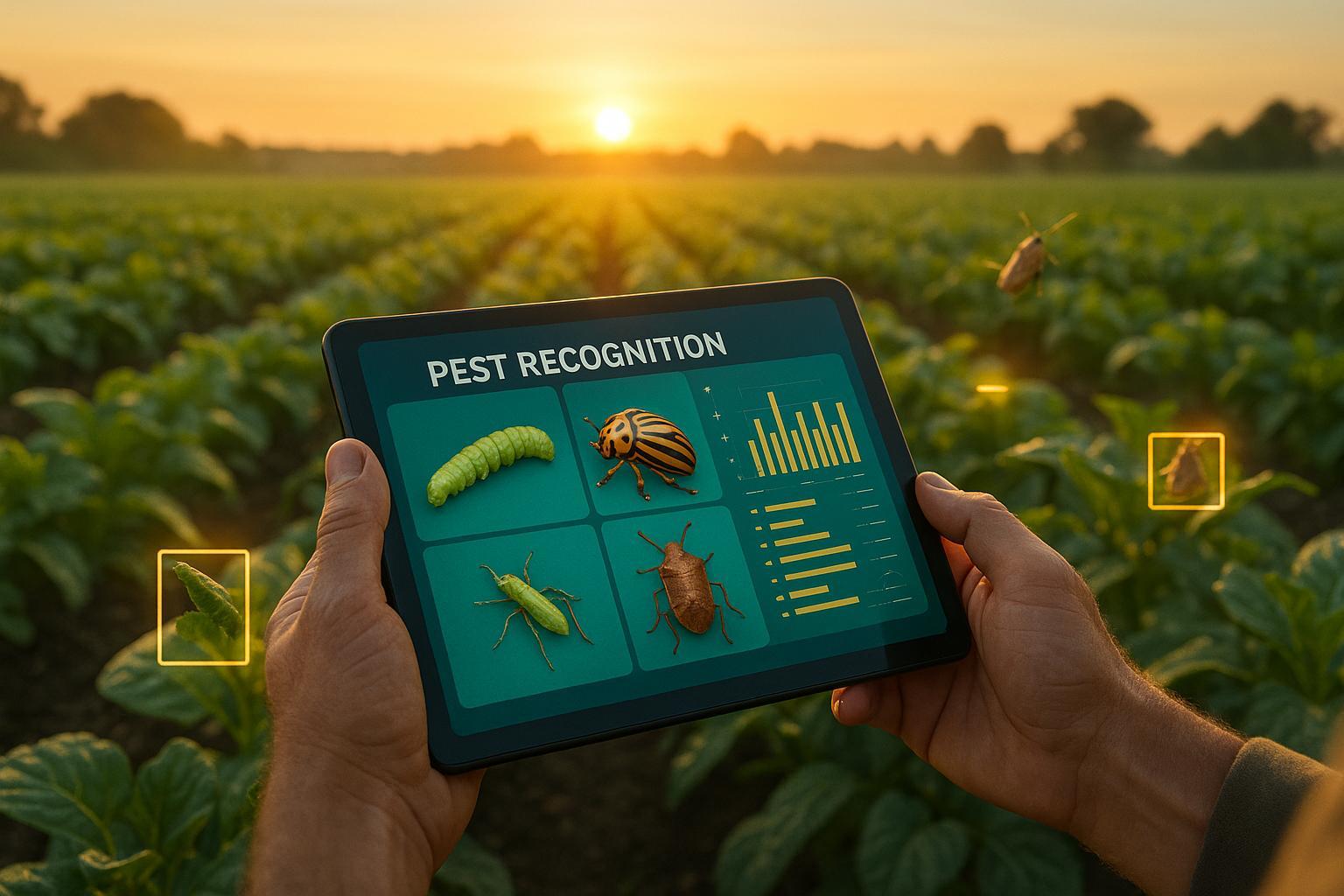
AI Datasets for Pest Recognition: Explained
Explore how AI datasets enhance pest recognition in agriculture, tackling challenges and leveraging synthetic data for improved crop management.

Ultimate Guide to Choosing the Best Online Garden Planner for Your Dream Garden
Discover the top features to look for in an online garden planner, learn how to select the best tool for your needs, and get expert tips for effective garden planning online.
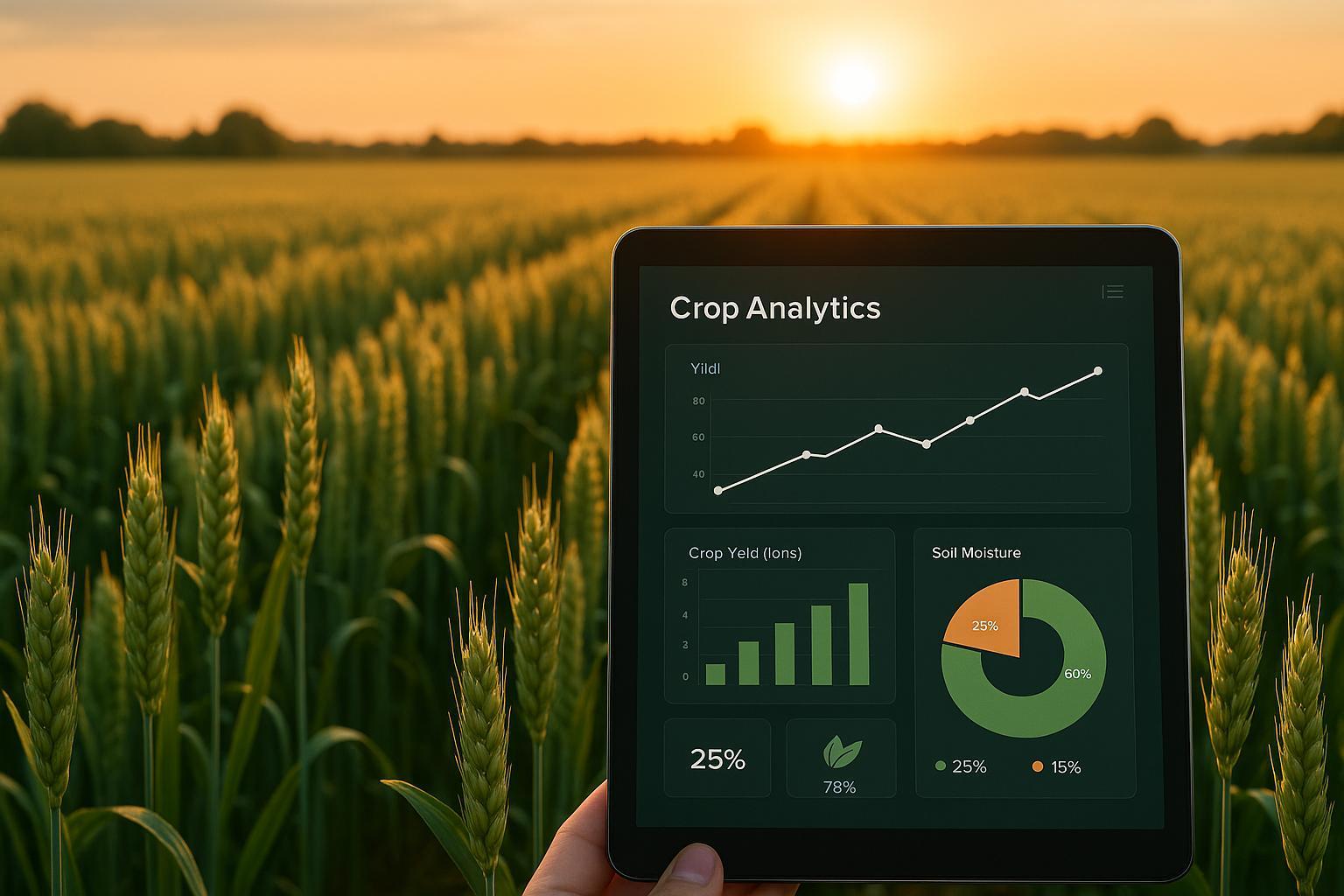
Top 7 Deep Learning Models for Crop Yield Estimation
Explore the top deep learning models transforming crop yield estimation, from DNNs to hybrid architectures, enhancing agricultural decision-making.
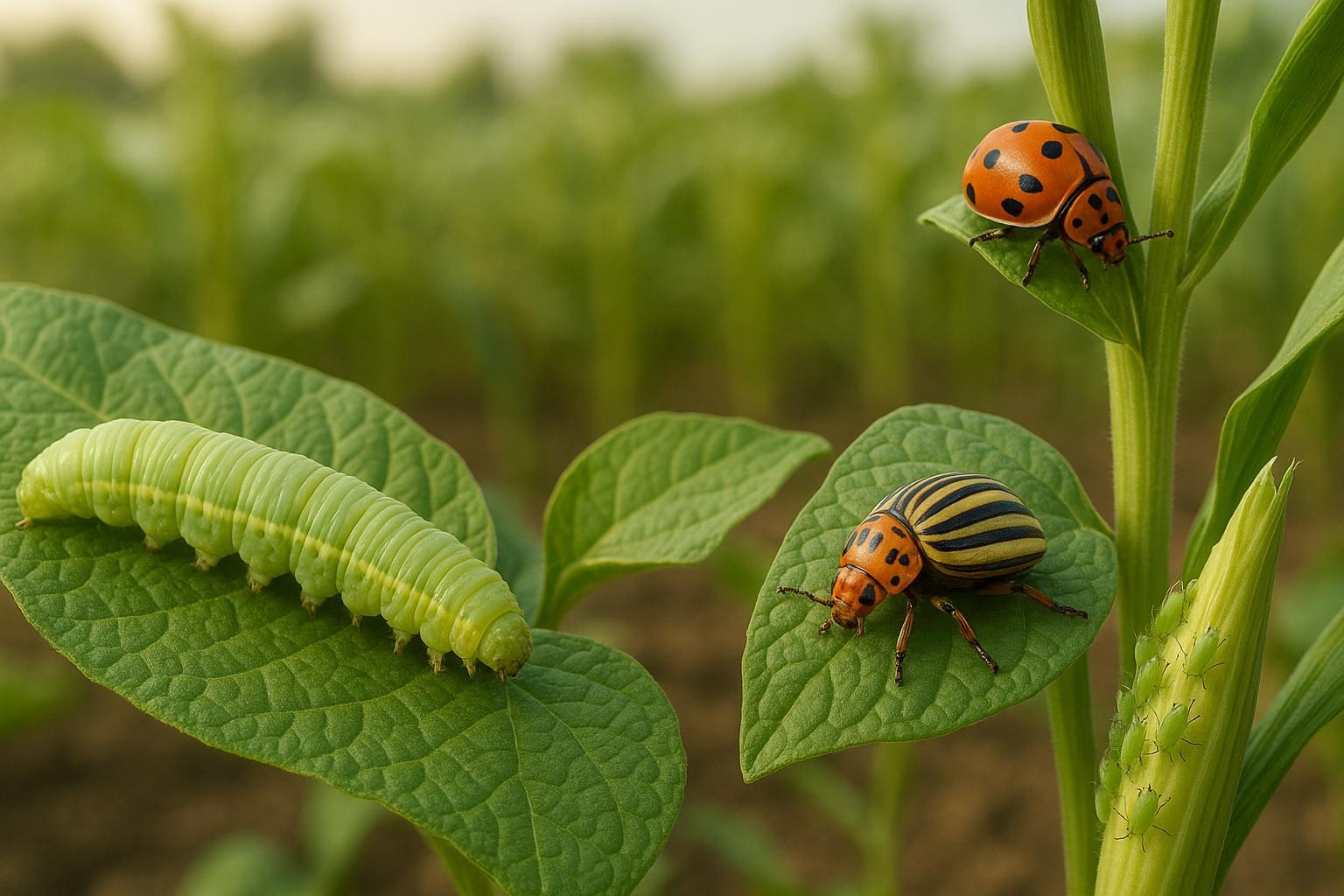
Best Free Pest Recognition Datasets Online
Explore the best free datasets for pest recognition that enhance AI tools for effective and sustainable pest management in agriculture and gardening.